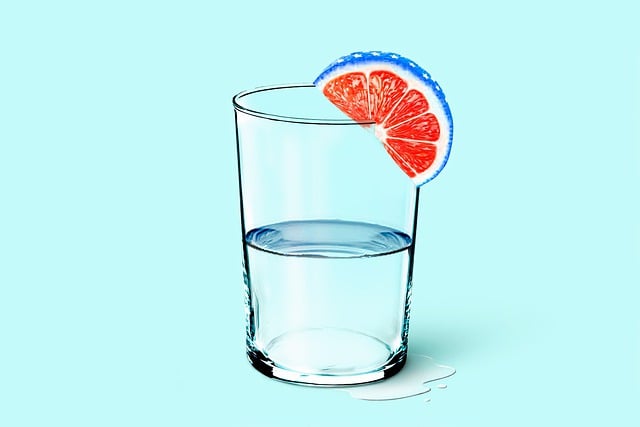Cold therapy, such as using ice packs and cryotherapy methods like cold water immersion, effectively manages and prevents migraine pain by constricting blood vessels and reducing inflammation. For acute episodes, applying a cold compress every 2-3 hours offers relief, while more severe cases may benefit from professional guidance on advanced cooling techniques with durations up to 20 minutes. These methods, including targeted ice packs and cold water immersion, can decrease migraine frequency and severity over time, but precautions like avoiding prolonged extreme cold are essential for safe use.
“Unwind the grip of migraine pain with the ancient remedy of cold therapy. This powerful natural treatment has gained prominence in alleviating headache symptoms, offering a refreshing alternative to conventional methods. Our article guides you through the science behind cold therapy for migraines, providing insights on duration and frequency to optimize relief. From ice packs to cryotherapy and cold water immersion, discover various cooling techniques effective for migraine pain management. We also explore benefits, precautions, and considerations to ensure safe and successful integration of cold therapy into your wellness routine.”
Understanding Cold Therapy for Migraine Relief
Cold therapy has emerged as a popular and effective method for migraine relief, offering a natural approach to managing intense headache pain. This technique involves applying cold or ice packs to specific areas of the head and neck, which can help constrict blood vessels and reduce inflammation. The use of an ice pack for migraine relief is a simple yet powerful tool that many sufferers find beneficial.
The benefits of cold compresses for headaches are well-documented in medical research. Cryotherapy, including methods like cold water immersion or targeted application of ice packs, can significantly decrease the intensity and duration of migraines. These cooling techniques work by slowing down nerve impulses and reducing muscle tension, which helps alleviate migraine pain. Many people find that regular use of these methods can even prevent migraines from occurring in the first place, making them a valuable addition to any migraine management strategy.
Duration and Frequency Guidelines
When utilizing cold therapy for migraine relief, both duration and frequency play crucial roles in achieving effective results. For acute migraine episodes, applying a cold compress or ice pack to the head and neck areas for 15-20 minutes can significantly reduce inflammation and numb pain receptors, offering swift relief. This short yet intense treatment can be repeated every 2-3 hours as needed, ensuring the cold pack remains an accessible and convenient option for on-the-go migraine management.
For chronic migraines or more severe cases, exploring more intensive cooling techniques like cryotherapy or cold water immersion may be beneficial. Cryotherapy involves brief exposure to extremely cold temperatures in a specialized chamber, while cold water immersion requires submerging parts of the body in icy water. These methods can provide profound anti-inflammatory effects and have been shown to reduce migraine frequency over time. However, due to their intensity, these treatments should be administered under professional guidance, typically with recommended durations ranging from 5 to 20 minutes, depending on the protocol and individual tolerance.
Various Cooling Techniques for Headaches
When it comes to alleviating migraine pain, exploring different cooling techniques can be a game-changer. The simplest and most accessible method is using an ice pack for migraine relief. Applying an ice pack or a cold compress to the forehead, temples, or back of the neck can help constrict blood vessels, reducing inflammation and numbing the pain receptors. This simple yet effective approach is often the first line of defense for many sufferers.
For more intensive treatment, cryotherapy for migraines involves immersing oneself in extremely cold environments, such as a cryosauna or taking a cold water immersion bath. These methods provide deeper cooling effects, which can significantly reduce inflammation and numb headache-inducing nerves. While cold water immersion for migraines may sound extreme, it has been shown to offer lasting relief for some individuals, making it an intriguing option for those seeking alternative migraine pain relief with cold therapy.
Benefits, Precautions, and Considerations
Benefits of Cold Therapy for Migraines
Cold therapy, including the use of ice packs or cryotherapy sessions, has been found to offer significant relief from migraine pain. The application of cold compresses can help constrict blood vessels in the brain, reducing inflammation and inhibiting the release of pain-causing neurotransmitters. This results in a calming effect that soothes migraine symptoms and promotes faster recovery. Many sufferers find that regular use of cooling techniques, such as cold water immersion or targeted ice packs, can reduce the frequency and severity of migraines over time.
Precautions and Considerations
While cold therapy for migraines has proven beneficial, it’s not without its precautions. Prolonged exposure to extreme cold may cause skin irritation or sensitivity, especially in those with already compromised skin conditions. It’s crucial to monitor the duration of cold applications to avoid hypothermia or tissue damage. Additionally, individuals with Raynaud’s disease or certain cardiovascular conditions should consult healthcare professionals before attempting cryotherapy. The type and intensity of cold therapy should be tailored to individual needs, considering factors like overall health, tolerance to cold, and the severity of migraines experienced.
Cold therapy has emerged as a highly effective and accessible tool for migraine relief. By employing various cooling techniques, from simple ice packs to immersive cold water experiences, individuals can find significant reduction in migraine pain. Following established duration and frequency guidelines ensures optimal benefits while minimizing risks. Understanding the nuances of cold therapy, its precautions, and individual considerations allows folks to navigate this natural remedy effectively, fostering a new level of comfort and control over their migraines.
